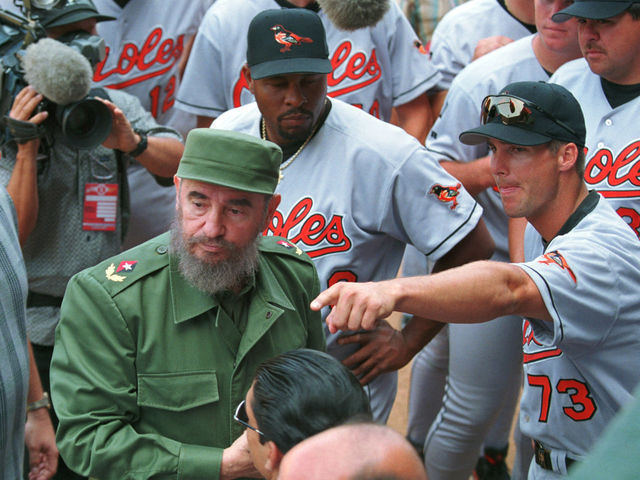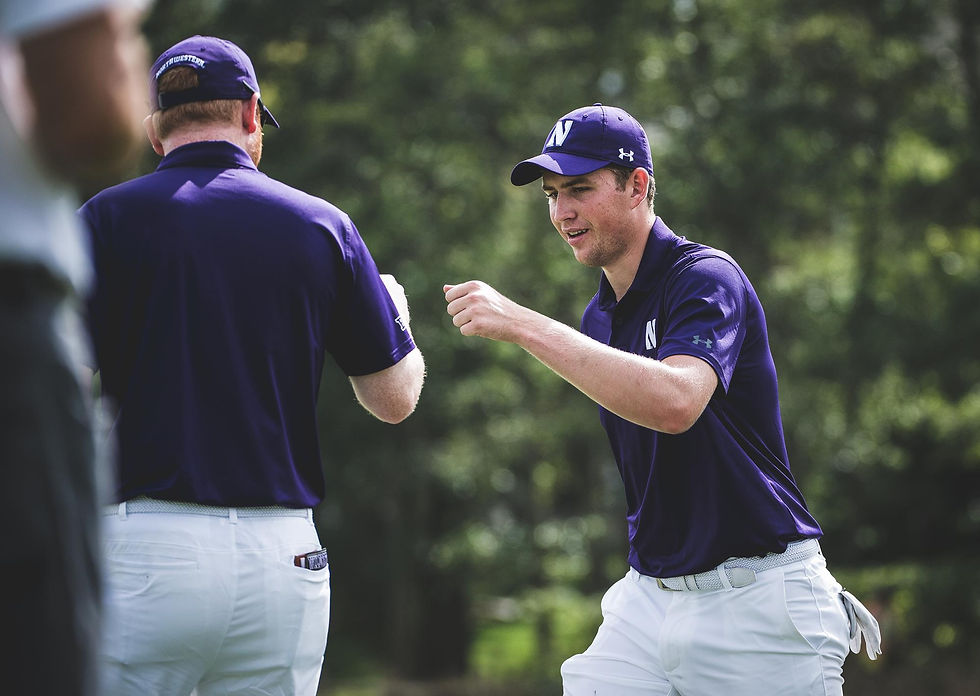Twenty-five years later, the Orioles’ trip to Havana is remembered with shared passion over baseball
- Michael Barthelemy
- Jul 11, 2024
- 4 min read

On March 28, 1999, days before MLB Opening Day, the Orioles held a 3-2 lead in the bottom of the 11th inning. This game won’t show up on any season record, yet from the first pitch, the game’s energy emulated a World Series environment in front of 50,000 fans.
For the first time in 40 years, the opponent was the Cuban National Team. Players saw Fidel Castro sit between MLB Commissioner Bud Selig and Orioles owner Peter Angelos. With one out and the tying run at first base, relief pitcher Jesse Orosco forced two ground balls over to second baseman Jesse Garcia. Garcia dove to the dirt twice and converted both outs to give the Orioles the first win for an American side since the US placed an embargo on Cuba.
Twenty-five years after Baltimore’s trip to Havana, that one game lent an eye into the world’s most secret baseball powerhouse. One team was littered with millionaires, while the other represented an impoverished nation, yet it represented a moment where governments put their differences aside to compete in a shared national pastime.
“It felt like a touch of October playoff baseball,” general manager Frank Wren said. “There was a lot on the line. Everybody was into that game, and our guys really wanted to win.”
Upon touching down in Havana, players got an instant taste of the wealth disparity between the U.S. and Cuba.
“There were a lot of old dilapidated buildings and everything was gray,” first base coach Marv Foley said. “It reminded me of an old World War II movie.”
For this game to commence, MLB partially renovated Cuba’s Estadio Latinoamericano to meet league standards. The pure concrete outfield walls were installed with padding, and the field was redone before first pitch. Facilities and the stadium’s infrastructure were just as poor.
“I went to the academy where the national team trains and I thought, ‘Are you kidding me, that’s it?’” Richard Justice, who reported on the game for the Washington Post, said. “‘This is where some of the greatest baseball players in the world come from?’ It was more sadness that this facility was so decrepit. The dressing areas, clubhouse areas, dugouts, everything was just allowed to disintegrate.”
Yet, the passion for baseball bled through. In the town square, men debated the skill of Cuban star Omar Linares versus Jose Canseco and Mark McGwire. That passion followed into Estadio Latinoamericano from the moment the gates opened.
“For an hour and a half or two hours before the game it was packed, the fans were watching us take batting practice,” outfielder Rich Amaral said. “Normally, they don’t open the gates up that early and there are just people here and there, but this was full.”
The Cuban team had the ultimate home field advantage. Before the game, both teams came out for a flag ceremony, Castro came out to greet the crowd, and Cuban baseball legend Conrado Morrero threw out eight different ceremonial first pitches to the sold-out crowd and an ESPN national telecast. From then on, fans made their presence known.
“I remember standing at first base thinking that there were all these people, and all of them were against us,” Foley said. “They had bands playing and people doing all sorts of dances and cheering. They wanted to beat somebody from the U.S.”
Once Garcia converted the final out of the win, the trip switched to diplomacy. That night, the Baltimore organization traveled to Castro’s Palace of the Revolution for a dinner with the president.
As members made their way down the hallway, Castro waited at the end of the hall to shake hands with each member of the team.
“I was nervous to shake his hand because I thought all his bodyguards were gonna attack us,” pitcher Arthur Rhodes said. “They had so many guns on them. He was a nice guy though, really just said hi and how are you and that was it.”
Coming face to face with a dictator so infamous escalated this trip from nine innings on the diamond. Catcher Julio Vinas ultimately refused to shake Castro’s hand, as Vinas’ parents escaped Cuba in the 1950s, and he couldn’t bear the idea of approaching the man.
“When he started walking through the line, he said, ‘I will not shake his hand and I will not be seen with him and I will not have a picture taken,’” Wren said. “He snuck out the back and figured out a way to get into the dining room with the rest of the players but bypass that receiving line.”
Vinas encapsulated the trip’s nuance. The 40-year reunion was a novel experience for players and fans internationally, yet walking the streets of Havana was a reminder for those on the trip of how Cuba struggled financially. The island was a beacon of talent that played in outdated venues.
The Orioles’ trip to Cuba ultimately did not lend any help to mend broken diplomacy. A 2016 trip by the Tampa Bay Rays is the only time a MLB club has visited Havana since. Nevertheless, 1999 marked a moment in time for the club to represent more than the city of Baltimore.
“We appreciated winning that game,” Wren said. “I felt a lot of pride in winning it. The team felt like they were representing Major League Baseball in the United States in a way.”

Comments